Hagia Sophia has been standing as one of the cultural assets of Istanbul for hundreds of years, first as a church, then as a mosque and then as a museum. With its architecture, religious significance and legends, Hagia Sophia is a value that has maintained its importance in every period. When was Hagia Sophia built, who built it, what is the meaning of Hagia Sophia Museum This article is waiting for you, happy reading!
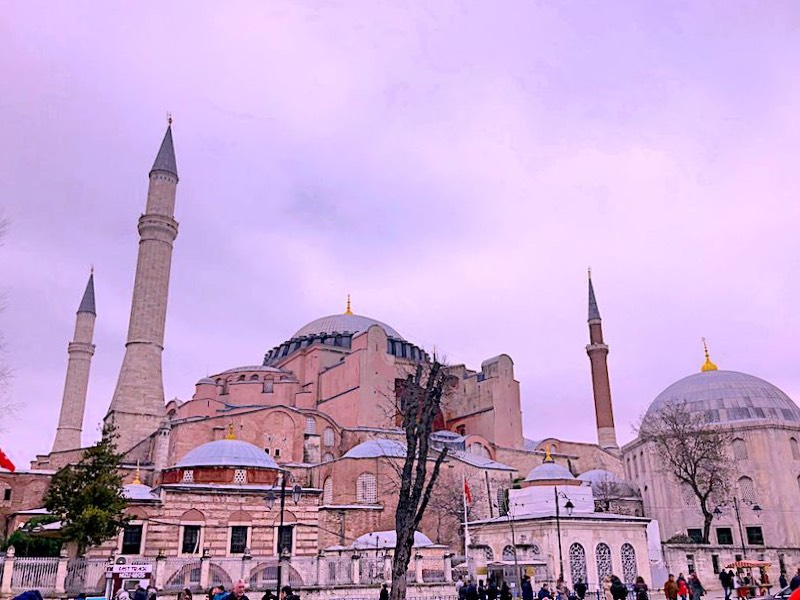
When Was Hagia Sophia Built? Who Built Hagia Sophia?
Hagia Sophia is the largest church built by the Eastern Roman Empire in Istanbul. This magnificent structure, which attracts the attention of the whole world with its architectural structure, historical importance and legends, has been built and revised many times.
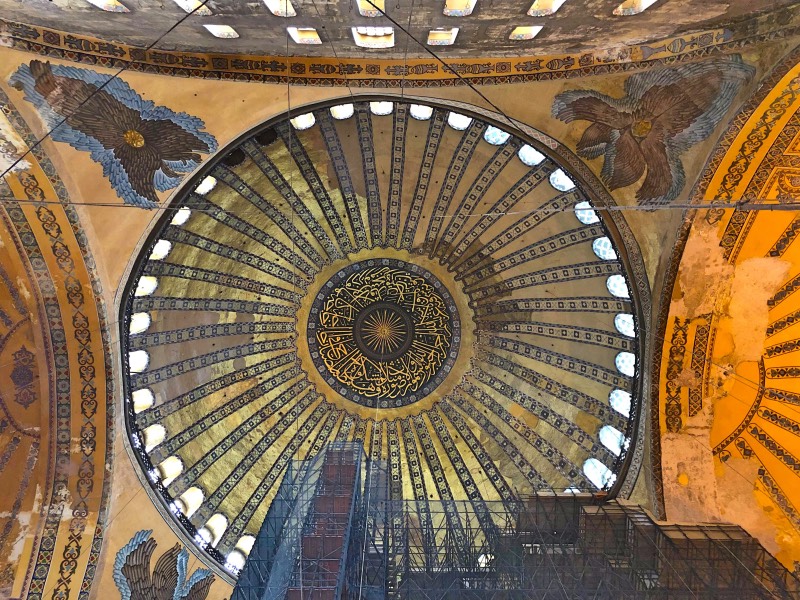
If we look at when and by whom the church was built three times in the same place during the Eastern Roman Empire;
- In 360, by Emperor Constantius Megale Ekklesia It was built as the Great Church.
- In 415, Emperor II. Theodosis had it rebuilt, but this church was destroyed by popular uprisings.
- Its construction began in 532 by Emperor Justinian. The construction, in which 1000 masters and 10.000 workers worked, lasted for five years, was opened to worship with a great ceremony in 537 and Hagia Sophia It was called (Divine Wisdom).
With the conquest of Istanbul by Fatih Sultan Mehmet in 1453, the church was converted into a mosque. In the 16th and 17th centuries, altars, pulpit, muezzin mahfils, sermon pulpit and maksures were added to Hagia Sophia, making it more suitable for use as a mosque.
Hagia Sophia started to serve as a museum in 1935 with the order of Mustafa Kemal Atatürk and the decision of the Council of Ministers.
Architecture of Hagia Sophia
Hagia Sophia was the building with the largest dome at the time it was built. For this reason, he was considered an architectural genius. The diameter of the huge dome, 4 meters high, placed on 55 thick columns called elephant legs, is 30,31 meters. The interior of Hagia Sophia measures 100 x 70 meters.
It is a very valuable architectural work where you can see many beauties such as the original ceiling mosaics in Hagia Sophia, 8 round line plates added during the Ottoman period, tiles and marble work.
About Hagia Sophia Museum

The church, which was converted into a mosque after the conquest of Istanbul by Fatih Sultan Mehmet, was turned into a museum in 1935 by the order of Atatürk. It continues to serve as a museum to this day. The museum is among the top 3 most visited museums in Turkey.
Hagia Sophia Museum Visiting hours
The museum is open between 09:00-19:00 (Summer Period 01 April-31 October) during the summer period and between 09:00-18:00 (Winter Period 31 October-01 April) during the winter period. The museum, which is open 7 days in the summer period, is closed on Mondays in the winter period.
Ticket Sales Hours: Hagia Sophia ticket offices are open until 17:30 in summer and until 16:00 in winter. If you enter after that time, I recommend that you do not leave your trip to these hours, as you will not have enough time to visit.
Hagia Sophia Museum Entrance Fee 2020
Hagia Sophia Museum entrance fee is determined as 2020 TL for 100.
Museumcard Since it is valid, it makes much more sense to buy a card and go. If you do not have a museum card, there is a sales point at the entrance of Hagia Sophia. My suggestion is that if you are going to visit this region, I suggest you get your Museum Card and start your tour first. With the Müzekart, you can visit this museum 2 times a year, free of charge.
Where is Hagia Sophia? What is Contact Information?
Wherever you say Hagia Sophia, it is located in Sultanahmet Square. They greet the square with the Blue Mosque. Click for the exact location.

Below you can find the full address, telephone and e-mail address.
Address: Sultanahmet Square No:1 Eminönü/İSTANBUL
Phone: (0212) 522 17 50 - 522 09 89
Email: [email protected]
Cats of Hagia Sophia
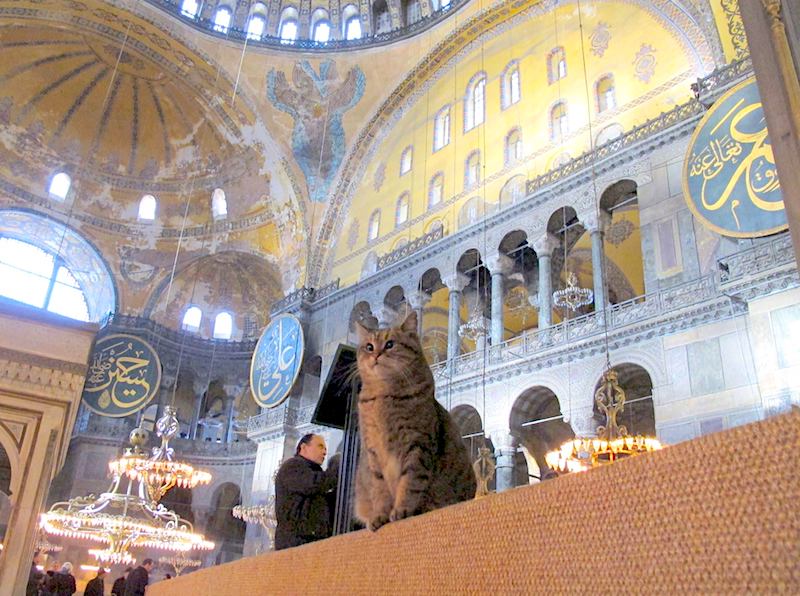
There are always cats in the Hagia Sophia Museum. One of them is the very famous Gili with light stuff. Foreigners who came to the museum said, "There is a cat here, where can we find it?" I've even seen them ask. You can follow Gili on Instagram: @hagiasophiacat . There are many cats besides Gili, but Gili attracts the attention of the visitors because she is extremely cute with her squinting face.
Hagia Sophia Runic Viking Inscriptions
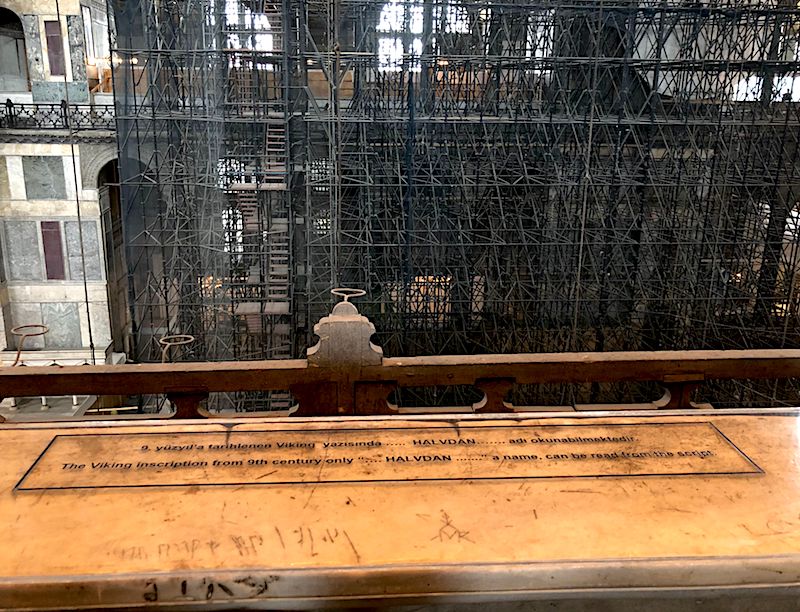
While visiting the Hagia Sophia Museum, I definitely recommend you to go up to the second floor. From the second floor, the magnificence of the building can be seen more clearly, and there is a surprise waiting for you. On the marble balustrade, you will see Runic inscriptions, which were thought to be cracked when first found, but later turned out to belong to a Viking commander. It used to be difficult to find, now it has a sign in front of it, so you can't miss it.
It has been determined that these Runics were written by Halvdan, the palace guard who visited Hagia Sophia in the 9th century, and is mentioned as a Viking commander in some sources. The commander wanted to leave a mark on Hagia Sophia, where he was very impressed, and wrote "Halvdan was here".
Hagia Sophia Weeping Column or Sweating Column or Perforated Column
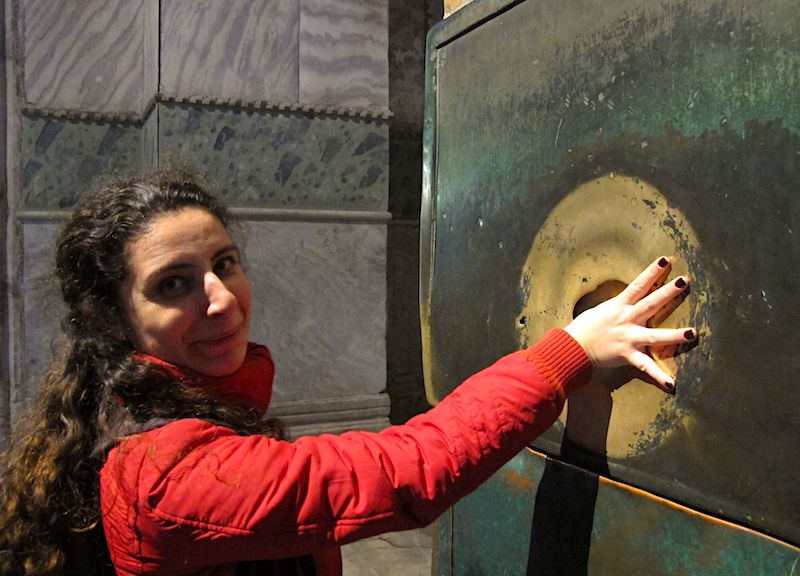
When you enter the Hagia Sophia Museum, you will see a rudeness in the northwest of the building. The reason for that crowd is the column known as the perforated column, the weeping column, or the sweating column. There are multiple legends associated with this column. Let me list what I know below:
- According to the legend, the Eastern Roman Emperor Lustinianos is suffering from an unbearable headache and starts walking around the church to forget his pain. He leans his head on this column as he wanders, and soon realizes that his pain is gone. When the event is heard, the people begin to believe that the column heals. They believed that when you insert your finger into the hollow in the column and rotate it 360 degrees, you will find healing by applying the wetness that comes to your hand to the sick place.
- According to another legend, the wetness in the hole Hz. It is believed to be the tears of the Virgin Mary.
- Another legend is that Mehmet the Conqueror came to Hagia Sophia to perform his first prayer after conquering Istanbul. However, since the direction of Hagia Sophia is not facing the Kaaba, they cannot start the prayer. While they were trying to decide which way to pray, Khidr Aleyhisselam came and tried to turn the building towards the Kaaba by inserting his finger into the hole in the sweating column. However, when he is seen by someone, he disappears before he can translate. As a reflection of this legend, it is believed that if your finger gets wet when you put your thumb in the hole and make a full turn, your wishes will come true.
You are free to believe in any or any of the myths you want. Believe it or not, it's fun to give your thumb a spin in the hole.
If you don't have time to do preliminary research to visit Hagia Sophia, I suggest you join a guided tour, as you know I don't usually recommend many tours. Since Hagia Sophia contains many mysteries with its deep history, it will be useful to learn about its important points instead of walking dryly.
Another important thing to know about the museum is that there is continuous restoration work inside or outside. Every time I go to the museum, there is always a scaffolding in one corner. The reason for this is that while one side is being maintained, the other side continues to wear out.
If you are visiting the Hagia Sophia Museum, I recommend you to see not only the interior but also the buildings outside the building: Sultan II. Selim III. Murad, Sultan III. Tombs of Mehmed and Sultan Mustafa I and Sultan İbrahim, Şehzadeler Tomb.
In addition, Hagia Sophia's four minarets, two of which were built by Mimar Sinan, the Sıbyan Mektebi fountain, the timetable, the fountains, the buttresses, the treasury building and the almshouse, the library, are the features that make Hagia Sophia Hagia Sophia.
If you have any other questions about Hagia Sophia, you can write them in the comments.
places to visit in Istanbul Check out my post for inspiration.
Stay healthy.
